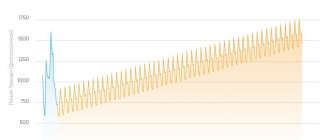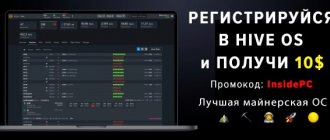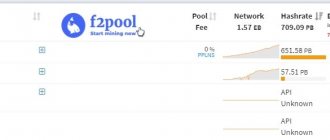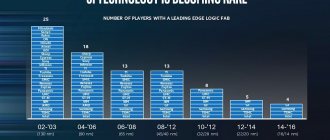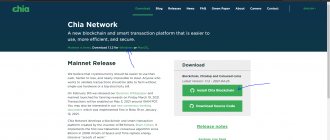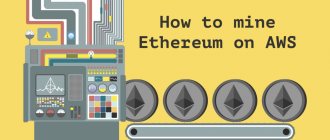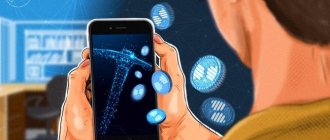Translation of the official article “Pooling User Guide” (Original: https://github.com/Chia-Network/chia-blockchain/wiki/Pooling-User-Guide)
Due to the increase in network size (netspace), winning blocks in Chia is a very difficult task and can take months or even years for users with multiple seeded hard drives. The pool will allow you to win consistently, in small quantities. For example, a user earning 2XCH over 20 weeks of solo farming could instead earn a consistent 0.1 XCH per week.
Chia's pooling protocol allows you to assign an "NFT" raft, which is a kind of blockchain contract that you control and in which you can set your current pool. You can also change the pool that the NFT raft is tied to at any time.
With a pool protocol, your farmer will talk to a specific pool server and very often send proofs of space to that pool to prove how much space you have on the rafts. This way, the pool can keep track of the disk space of each of its members (farmers), and whenever one of the members wins a block, the pool distributes rewards in proportion to the amount of disk space each farmer contributed.
In this way, the pool is a kind of lottery insurance: all members participate in the Chia "lottery", and whenever one of the members wins, the pool receives a reward and distributes it among all members, minus a small commission. As a block winner, you will also earn a small portion of that 1.75, depending on how much space you have and how the pool decides to distribute the rewards.
Technical and economic features
Although similar to Bitcoin in some respects, Chia's code is written entirely from scratch and does not use the Bitcoin codebase.
To reduce currency volatility, Chia will use the strategic reserve created as a result of pre-farming. The developers set their goals in the following areas: creating an ideal blockchain for deploying applications, creating the first publicly traded currency close to an ETF, and stimulating adoption in corporations and among end users. Due to the demand for XCH, prices for HDDs have increased significantly in some places. The project does not plan to conduct an ICO; instead, it will go to the stock exchange - it will conduct an IPO that complies with SEC requirements.
After pre-farming, Chia will offer a reward of 64 XCH every 10 minutes. For twelve years after launch, there will be a halving every three years (the reward will be halved), then the reward will remain at the same level indefinitely (4 XCH every 10 minutes). This is done so that the price of Chia coin is subject to inflation as little as possible.
Pool miner Chia Coin and solo mining
How to farm chia on a pool? Chia’s algorithms resist the mining of crypto coins using ASIC devices, and the protocol that opens mining in servers has not yet been presented by the developers. The only way is to mine coins yourself.
HPool.com
Mining services in the group are offered by HPool.
It was not possible to completely avoid the appearance of specialized devices on the mining market - the place of ASICs was taken by specialized SSDs for Chia mining, the production of which is already underway in China.
The disadvantage of solo mining is the slowness of block processing, which means mining crypto coins, compared to a pool for collective chia mining. Competition among miners is growing, which means the process will require connecting an increasing number of HDDs. At the same time, there is a shortage of drives on the market caused by farmers, and an increase in prices for drives that are still available, which means a double increase in costs.
Chia is still in beta testing and coin cashing out or trading on crypto exchanges is not available. At current farmers' expenses, the Chia rate should be about $3.4.
The Hotbit exchange trades so-called IOUs, or Chia IOUs. The Chia exchange rate here at the end of April is about $1,300. This gives an approximate understanding of how trading in real crypto coins starts. It is worth taking into account the fact that, compared to IOU, currency prices may be several times lower.
How to mine chia for pool
If the power of a farm with HDD or SSD is small, then you can mine currency on a pool - combining the power of a group of miners. The reward from the server is credited to the wallet of each server participant, its value depends on the power of the participant’s farm. The principle of operation of the chia cryptocurrency pool is this: farmers pool their power and calculate a block in the Chia blockchain, the reward is divided among everyone.
Choosing a pool for Chia Coin mining
Pool setting chia
Working pools can be viewed on the website miningpoolstats.stream/chia. The main selection criterion is the overall hashrate.
Chia how to connect to the pool? It is necessary to choose a server that occupies the largest possible percentage of network capacity (hpool.com) - it will find more blocks, therefore it is the most profitable. You need to go to his website and register for the pool. Registration is standard - after entering new data, you will receive a confirmation email and you must follow the confirmation link.
After logging into your account, you need to go to the Personal Center section to add verification from Google. To do this, you need to install the appropriate application on your phone.
Then you need to set up verification via SMS, but this server does not work with Russian and Ukrainian numbers; you can get around this by creating a virtual number on special services. After installing verification, you will be able to enter your wallet to which Chia coins will be credited.
To track mining Hpool stats chia (statistics), you need to go to the Pool section, Open Pool item, you will see a snippet. Click on Pool Details. You will see complete statistics on Chia coin mining on the Hpool pool.
Then you need to download the application – Chia plotter – from the Download Center section. The link takes you to GitHub, where you need to find the latest new version of the plotter and select to download the file whose name begins with “chia-plotter-gui” for your operating system.
The downloaded program needs to be launched; its interface is in Chinese, but this is not a problem, because... it has few elements. In the topmost input field you need to enter a mnemonic phrase from the wallet (must be 24 words) and click on the Sign button, which starts authorizing the wallet in the blockchain. Then you can compare your wallet number and the number that appears in the program after authorization; if they match, then everything is fine.
On the left side of the program window there is a vertical menu, in it you need to select the Pool section, in it the open Pool subsection and click on the All button at the top of the window.
A list of pools will be displayed, you need to find a server called CHIAECO and click on the Open Pool button, which is at the bottom of the information block. You will be taken to a page with this server, where you need to click on the Go To Configuration button - a section will open where you need to copy the signature received when you launched the plotter program into the input field.
In this case, the application will ask you to copy the code from the Google authenticator, after entering it, the Chia wallet number will appear under the Binding Check heading, it should have the Successful status. This means the wallet has been added to the server.
Where to buy Chia Network (XCH)?
The easiest way to obtain Chia is to directly purchase coins on the exchange. As of May 18, Chia is supported by such top exchanges as Huobi, FTX, OKEx, Gate.io, YoBit.
Unfortunately, the Binance exchange does not yet support Chia, but does not exclude the possibility of listing in the foreseeable future. Also, no crypto exchange supports Chia yet. The cryptocurrency is new and its support is only a matter of time.
As for storage, Chia can be held in the official Chia Blockchain application, where mining actually takes place.
Advantages and disadvantages of chia extraction
- The estimated value is not high compared to other currencies.
- Maximum energy saving without harming the environment.
- Unique Proof of Space and Time consensus algorithm.
- Relative cheapness of the project for novice miners.
- If the project takes off, then there is an opportunity to get a sufficient number of coins now and earn money later.
Advantages from a technical point of view:
- No special requirements for the motherboard or ports.
- Possibility of mining on a computer even with a built-in graphics processor without loss of efficiency.
- There is no need for particularly powerful power supplies due to low power consumption.
- There is no need to install an additional cooling system for the equipment. Therefore, separate premises are not needed even for the farm.
- Installing HDD equipment is simple.
- Setting up a program for mining coins does not require any special knowledge.
- For mining, you don’t need video cards, which are many times more expensive than hard drives, even SSDs.
- The noise from working hard drives is less than from video cards.
Flaws:
- If the project does not go well, you will lose funds for depreciation that could have been invested in your PC or, in the worst case scenario, the hard drive will burn out or become unusable.
- It is not known exactly how long it will take to mine at least one coin, that is, the time required to form a raft is quite long, since the complexity of the network changes very quickly.
- It is unknown how much the coin will ultimately cost, and if you have mined it, whether you should sell it immediately when sales officially begin or wait.
- The Chia coin has a limited edition, that is, the quantity is 21,000 pieces.
Disadvantages from a technical point of view:
- There is a wide variation in the durability of different hard drive models.
- It will not be possible to sell a “battered” hard drive on the used market, because any check will show the number of overwrites, BAD blocks and other characteristics that will spoil the impression of the product.
- The excitement has already begun, and as a result, the price of hard drives is creeping up.
- There will soon be a shortage of essential PC components.
- Most likely, the costs of purchasing capacious hard drives and SSDs are quite expensive.
To better understand the instructions, you can find additional articles about the formation time and speed of rafts, the right server and storage, as well as the amount of memory required, etc.
Setting up a Batnik for Chia plotting on a pool.
We return to the Github page and download the tool for creating rafts. (I'm using Windows 10, so I'll use this as an example).
Unpack the archive and open the batch file plotting.bat in a text editor.
I'm using Notepad++, a programmer's notebook.
We will see the following picture in the batch file.
You will need to substitute the values from the chia-plotting-gui program 0x12345
Farmer Public Key (fpk) and Pool Public Key (ppk).
You received them during the authorization of your wallet on the pool.
Now you need to register the config for plotting, namely the paths to temporary and permanent files, the number of simultaneously seeded rafts... in general, everything is the same as in the settings of the Chia solo-mining program, only in code.
-plotting-n 1
This parameter is responsible for the number of rafts to be seeded at the same time. Increase the value depending on the power of your processor, the amount of RAM, and the size of the SSD for temporary files.
By default, standard rafts will be created, those that are slightly larger than 100 GB. If you want to change it, add -k , for example 32,33,34,35 (default 32):
-plotting-n 1 -k 32
-d parameter is responsible for the address with the final storage of the created rafts on your large HDDs.
-t parameter is responsible for the address with temporary files during seeding. Specify the SSD address.
-plotting-cpu is responsible for the number of allocated processor cores for raft formation. Specify separated by commas without spaces, starting from zero.
-s number of threads (not processor) default 65536
-b corresponds to the amount of RAM used (default 3389).
-e disables the bitfield.
-r adds an additional directory with temporary files.
-u uint number of bins (default 128).
To display plotting progress as a percentage, add the -p .
Save all changes and run the Bat file. A CMD window will open and the plotting process will begin.
